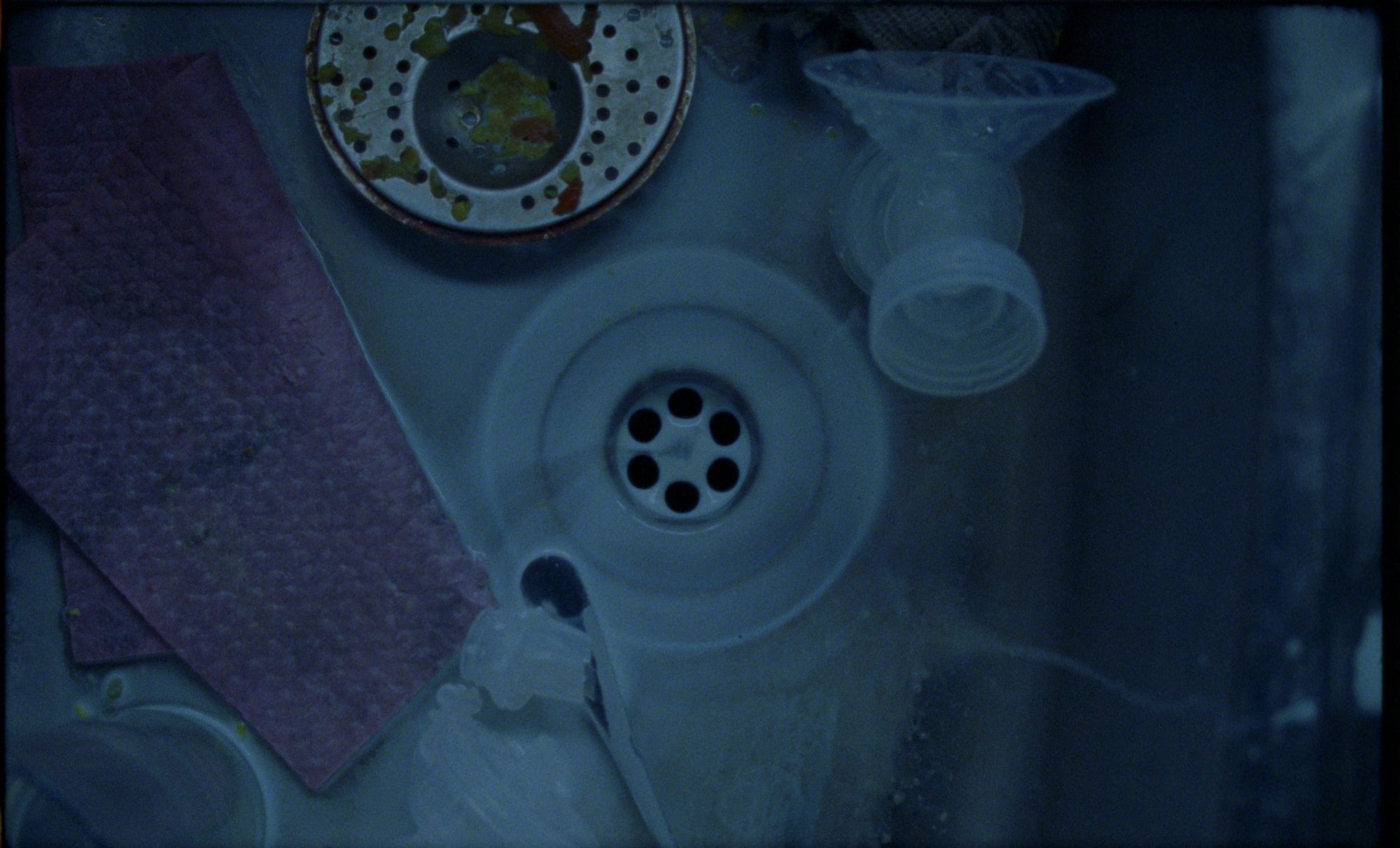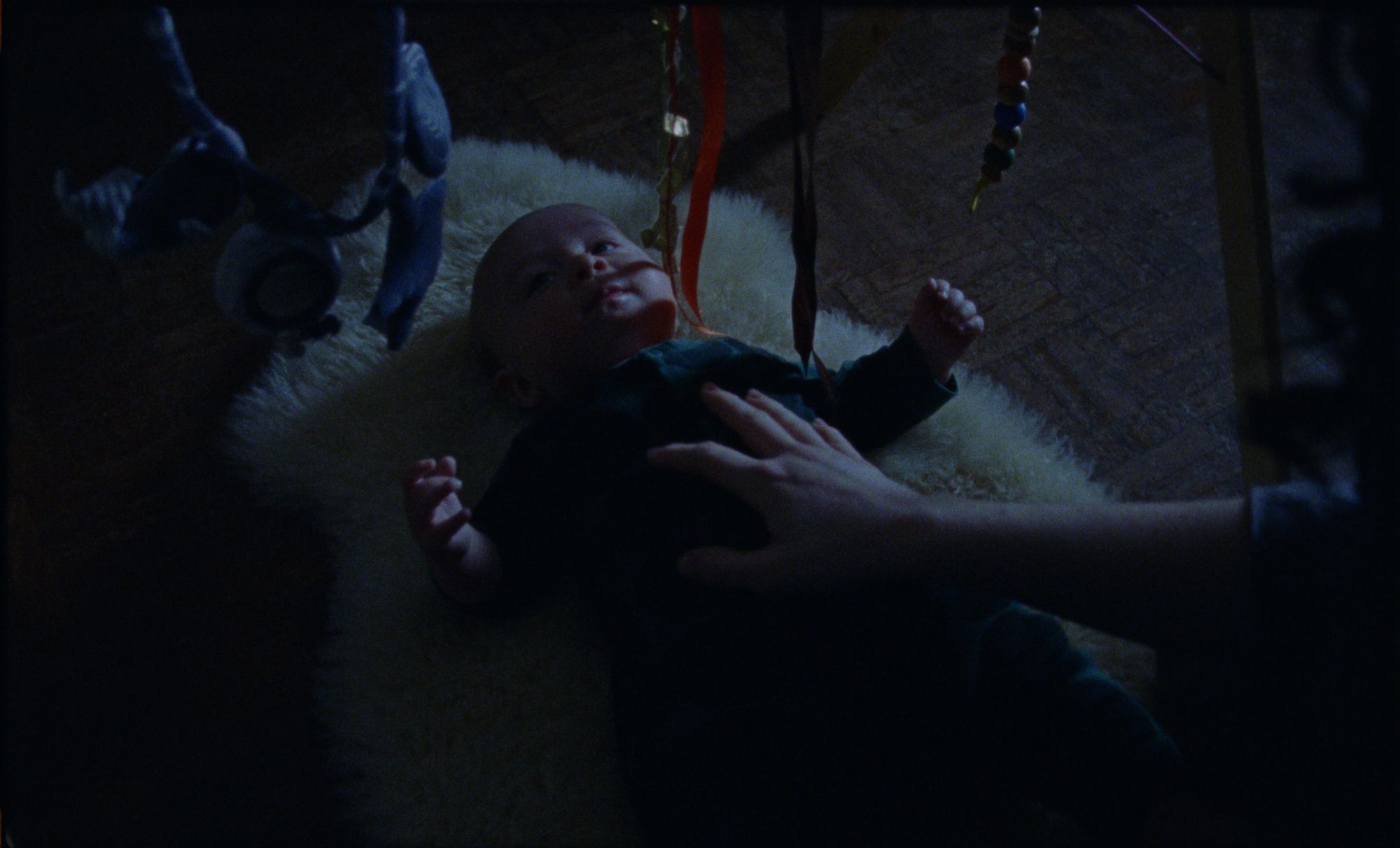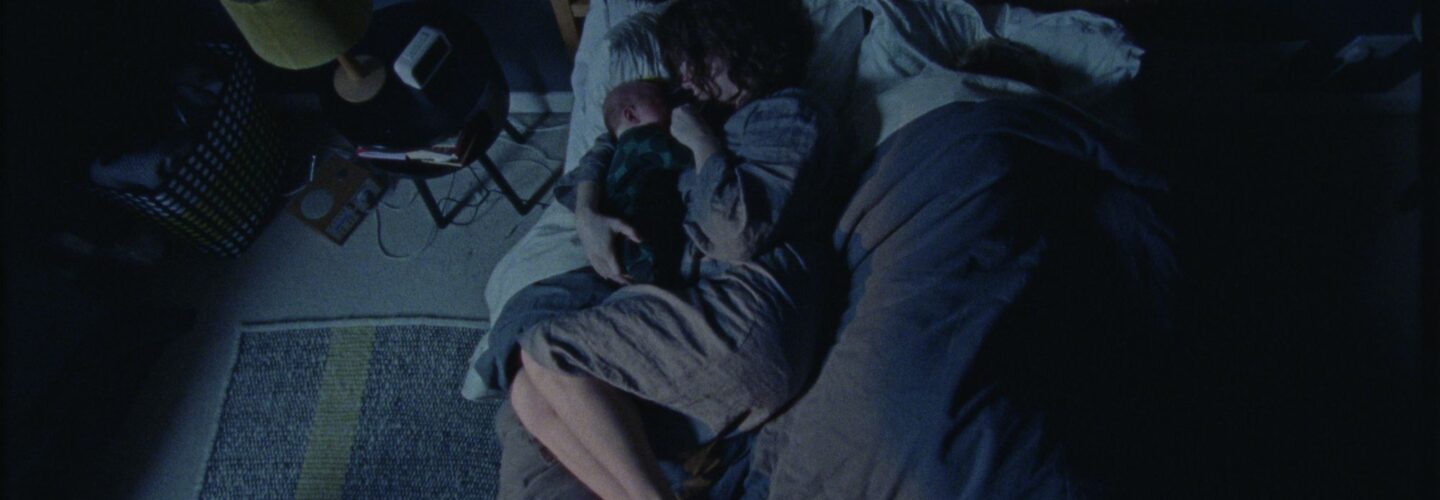
Originally conceived by Actor Phoebe Ladenburg and Writer Sophie Swithinbank for stage – with inspiration coming from Katherine’s final monologue in The Taming of the Shrew and Ladenburg’s personal experience of motherhood – Surrender is a forthright depiction of the emotional and mental strains which can come from losing your independence and identity on becoming a mother. It’s a powerful script that prompted Director Oskar Brockbank to take up the challenge of tapping into someone else’s vision for the first time, engaging his filmmaking abilities to paint an honest depiction of the all too visceral experience of a woman struggling in her role as a new mother. The film’s prose drives the narrative forward with a steady and considered pace, whilst the naturalistic 16mm imagery establishes a relatable world where the mother’s pain is keenly felt. Ahead of today’s premiere on DN, we invited Brockbank to speak to us about working with Ladenburg to craft an intimately personal performance that would resonate with audiences, as well as building visual motifs which added narrative depth without distracting from the central monologue that birthed the film.
What about Sophie Swithinbank’s writing made you want to take on your first project from an external writer and how did you ready yourself to do justice to such an emotive monologue which was out of your realm of direct experience?
The monologue was written by Sophie in creative partnership with Phoebe. After hearing an audio recording of Surrender we discussed the possibility of adapting it into a short film with the intention of using it as promotion for a longer form stage play. For me, it was a case of immersing myself as much as possible into her inner world and finding a direction for the film that would enable Phoebe’s performance and Sophie’s words to take the lead. This was a refreshing challenge, finding set ups and visual motifs that added layers to the story without distracting the audience from the dialogue, already rich with meaning. The same methodology was applied to the grade, set dressing, sound and music (or lack of), all designed to create an intense, visceral atmosphere, focused on Phoebe and her performance.
I felt how visceral the monologue was, but at the same time having room for a number of interpretations. I could clearly see a character grappling between two moral imperatives, and that alone lent itself perfectly to a film, even if the language wasn’t ‘realistic’. The first time I read Surrender I envisioned a mother speaking directly to her baby, like a kind of lullaby, but really she is talking to herself. The decision to set the film at dawn, with the sun slowly rising at the end was another idea that came on the first read. My first instinct was actually to shoot the film as a one-shot, following the mother as she meanders around the house. However, in the end, I felt like this would be too limiting, as I wanted the ability to cut away from the action and tell the story through angles not possible in a one-shot.

Could you go into more detail about the visual motifs you wove together in the film?
One of the key visual motifs I explored that ran throughout the film is veiling. I wanted to portray the mother’s character as someone uncomfortable within herself, torn in-between two realities, which is why you never see her face whole, as she is always either veiled by glass, or hidden by shadow. One instance in which you see this explicitly is when the mother confronts her own reflection in the kitchen window, which I felt was the right moment to be more overt in my representation of her fractured mental state.
I could clearly see a character grappling between two moral imperatives, and that alone lent itself perfectly to a film, even if the language wasn’t ‘realistic’.
Another visual motif referenced several times in Sophie’s original monologue is the sea, and I loved the idea of the character coming up with those words on the spot, unconsciously influenced by the environment she’s in. You can see this at various times in the short, for example, the morning dew on the windows is reflected in her line “…reached out soft arms, and drew first dewy breath did I keep little keeper in the dark”. I also incorporated the ‘sea motif’ with the water in the sink, and the cold light which is consistent throughout the film.

I loved the idea that the visual themes and motifs would join up at the end in unity, as do the mother and child. The monologue asks questions about the mystery of where one becomes two, and I wanted the film’s end to confront that. That’s why for the final frames we see two raindrops on the window merging, followed by a womb-like top-shot of the two of them reconnected.
What lay behind the choice to shoot Surrender on 16mm and how did your approach during the shoot in turn serve the visual themes you identified?
Despite the challenges of a tight budget, we made the decision early on to shoot on 16mm film using an Arri 416, Zeiss Ultra 16mm lenses, and Kodak 500T. It was important to create a sense of intimacy, a closeness that we couldn’t achieve on digital cameras. Furthermore, with such a small crew I believe we achieved a level of intimacy on screen that we may not have done with a bigger crew.
It was important to create a sense of intimacy, a closeness that we couldn’t achieve on digital cameras.
I really wanted single source lighting, using the cold, soft light from the windows. We let the light fall to black on the mother’s face, creating a sense that she is caught in between the dark and light. Working with Phoebe was a privilege, but it was also a challenge as she helped create the written piece and the story was personal to her. It was about being open and collaborative and finding small motivations to form each beat.

Phoebe’s performance is so raw, I imagine in large part due to her deep connection with the material, what was your process of working together on this?
Much of the work between Phoebe and I was in pre-production. We had several meetings and discussions about the film, crafting her character and motivations for each beat in the story. Of course every actor’s process is different, but on the whole I don’t like to over-rehearse, as you can lose a bit of freshness and spontaneity on the day. The main thing was to make sure we were both super clear on who her character was, and what had gotten her to the place she is in for our story. Once that was established we could play around a bit on the day, for example often I would suggest juxtaposing the dialogue with the emotion in her performance. Phoebe responded really well to that direction and it added a unique layer to the film as a whole.
Surrender in its written form has a beautiful rhythm, something I wanted to reflect with my pacing in the edit.
Whilst the words are incredible and the performance captivating, the despondency of the situation could have made this a challenging watch for audiences, yet you keep a gentle cadence and pace beautifully. How did you manage that?
One of my biggest attractions to the project was the chance to explore a subject deeply underrepresented on screen. The challenges of independence in early motherhood are very real experiences for so many, and I wanted to portray them honestly without shying away from any of the rawness and inner conflict it evokes. Phoebe and I were really focussed on keeping her character on a kind of moral tightrope, balancing between love and resentment. I wanted to take the audience to a place that mirrors that of the character, close to something sinister without ever indulging in it for too long.

Surrender in its written form has a beautiful rhythm, something I wanted to reflect with my pacing in the edit. I scheduled several visual details into the shot list, which gave me freedom in the edit to cut away from the action and take the audience into a new space, controlling the film’s cadence. Cutting away from the character was also crucial in making sure the audience never drowns in the bleakness of the subject matter, maintaining a level of emotional distance.
What are you working on next?
Along with Surrender I have another short film coming out this year, Olly Disappears, which I’m super excited to share. I’ve got a couple of new shorts which I’m planning on shooting early next year, one of which is written by Sophie, and the other is one I’ve written myself. Alongside this I’ve been writing a feature film, which has been a fascinating new challenge, as it’s the first time I’ve dipped my toes into something long form.


